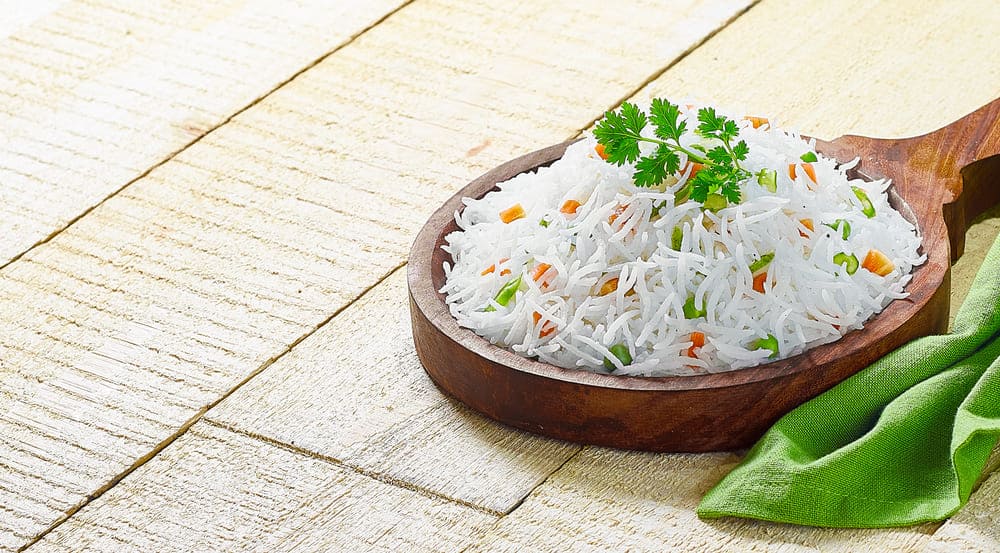
Rice is one of the most used foods out there and is often used for stretching meals. You might believe that there is only one type of rice out there, but it’s not true at all. That’s to say, because there are various forms of rice out there, and long-grain rice is one of them. But again, if you cannot find long-grain rice in your pantry, we have substitutes for long-grain rice!
Substitute For Long Grain Rice
The long-grain rice tends to be at least 4% to 5% longer as compared to the width. The long-grain rice has a dry form when it’s cooked when compared to short-grain rice. That being said, the long-grain rice doesn’t stick to each other and will remain separated. Also, it’s available in brown as well as white varieties. Now, let’s move to the substitute for long-grain rice!
1) Wild Rice
To begin with, wide rice is not the form of rice, but it’s actually a seed taken out from the grass. In particular, wild rice is the seed extracted from Californian grass. However, it’s also available in the United States (the northern areas, to be precise). The wild rice has brown or black. When cooked, it takes upon a nutty flavor and chewy flavor.
2) Brown Rice
For the most part, brown rice is the whole-grain rice that has an inedible exterior or outer hull. However, the hull is removed with brown rice. In addition, there are red rice, black rice, and gold rice with different pigments in the outer layer. Brown rice is the whole rice that is made by removing the husk.
3) Parboiled Rice
The parboiled rice is also known as easy-cook rice or converted rice. As the name suggests, these are partially-boiled rice and are boiled in the husk. The rice is made by soaking them, steaming them, and drying them up. After this process, the rice becomes much easier to process, and the nutritional profile will be enhanced as well.
The three-step process will improve the texture and will have resistance from weevils. That being said, the parboiled rice tends t be similar to brown rice with a much higher nutrition count!
4) Instant Rice
The instant rice is the rice form that’s already been cooked (precooked, actually). There are various types of instant rice available in the market. This is because some are suitable for microwaves while some have the dehydrated form for quicker cooking. To illustrate, instant rice takes around seven minutes for cooking, while regular rice takes around twenty to thirty minutes for cooking.
We have already mentioned that instant rice is prepared, so it can be extremely easy to cook. Instant rice can be cooked with various methods, but the home cooking method is widely used.
5) White Rice
For the most part, white rice is the milled rice that is made by removing germ, bran, and husk. That being said, the appearance, flavor, and texture of the rice will be improved. In addition, the storage life of white rice is higher, and the chances of spoilage are pretty less. The rice is often polished, which gives the white, bright, and shiny outlook. However, it’s important to understand that the polishing and milling process will remove the nutrients.
6) Basmati
If you are aware of Indian cooking, you would know that basmati rice is widely used in Indian cuisines. These are slender and long grains with immense aroma. Basmati rice is widely used and grown in Pakistan and India. Various other countries make basmati rice as well, but the Pakistani and Indian varieties are the most common ones out there. In addition, the basmati rice from Pakistan and India are the most delicious ones.
7) Jasmine Rice
This is the fragrant rice form from the long-grain rice variety. The jasmine rice is highly fragrant when it is harvested freshly. However, the aroma tends to disperse with time. The jasmine rice is cultivated in Thailand, Laos, Cambodia, and Vietnam. The rice has a soft and moist texture and even has a slightly sweet profile.
Jasmine rice tends to stick with each other when cooked. All in all, the steamed rice goes perfectly with braised food, stir-fries, and grilled food. In addition, it’s perfect for soups. However, it’s not suitable for making fried rice because the texture is soggy and soft!